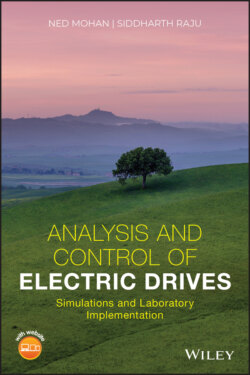Читать книгу Analysis and Control of Electric Drives - Ned Mohan - Страница 19
1‐3‐2 Energy‐Saving Potential in the Residential and Commercial Sectors
ОглавлениеOut of the total, the residential and commercial end‐uses represent 39% of the total energy consumed, as depicted in Fig. 1-3. In the residential sector (Fig. 1-5a), the primary energy consumption of electric motor‐driven systems and components is 4.73 quads. In the commercial sector (Fig. 1-5b), it is 4.87 quads. Fig. 1-5a and b provide a breakdown of motor‐driven energy consumption by end‐use for the residential and commercial sectors, respectively. Thus, approximately 10% of the total primary energy consumed can be attributed to electric motor‐driven systems in the residential and commercial sectors.
Fig. 1-5 Energy usage in (a) residential sector and (b) commercial sector.
According to [4], the technical energy‐saving potential achievable through motor upgrades and variable speed technology is estimated to be 536 trillion BTU (0.54 quads) of the primary energy in the residential sector.
In the commercial sector, technical potential due to motor upgrades alone is 0.46 quads of the primary energy, whereas the potential savings resulting from the use of variable‐speed drives alone is 0.53 quads of the primary energy.
Therefore, the primary energy‐saving potential in the residential and the commercial sectors combined is approximately 1.53 quads. This, as a percentage of the total primary energy consumed, is approximately 1.5%. Assuming the efficiency by which the primary energy is converted to electricity to be 35%, the savings of 1.53 quads of the primary energy equals approximately 157 billion kWh of saved electricity. As a percentage of the total electricity generated in 2018 in the United States, this represents savings of 3.76%.
Therefore, in the United States, industrial motor systems of all sizes and in all applications, combined with the motor systems in residential and commercial sectors, have the potential energy‐saving opportunity, as a percentage of the total US end‐use electricity is from approximately 7 to 12%.
